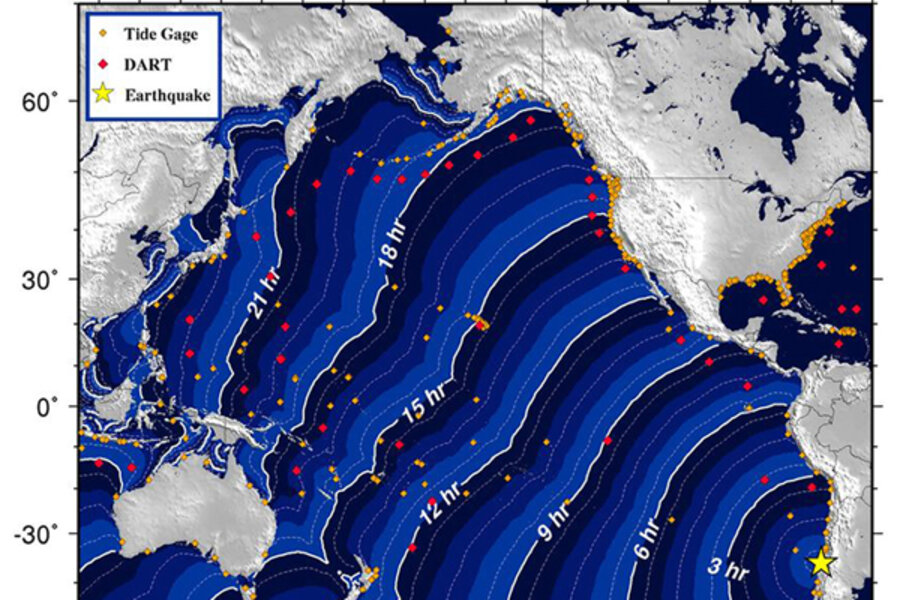Tsunami warning issued for Hawaii following massive earthquake in Chile
Loading...
| EWA BEACH, Hawaii
Hawaii braced for a potentially damaging tsunami Saturday, generated by the massive earthquake struck central Chile.
The Pacific Tsunami Warning Center issued a tsunami warning - its highest alert - for Hawaii, where incoming waves could cause damage along the coastlines across the island chain. A warning was also in effect for Guam, American Samoa and dozens of other Pacific islands.
The first waves were expected to arrive in Hawaii at 11:19 a.m. Saturday (4:19 p.m. EST).
In Pictures: Early images from earthquake in Chile
The state planned to sound warning sirens statewide at 6 a.m. to alert residents and tourists of the incoming tsunami, said Shelly Ichishita, spokeswoman for state civil defense.
A lower-grade tsunami advisory was in effect for the coast of California and an Alaskan coastal area from Kodiak to Attu islands.
The Ewa Beach, Hawaii-based center called for "urgent action to protect lives and property" in Hawaii, which is among 53 nations and territories subject to tsunami warnings.
"The main thing is we want everyone to take this event seriously," said Charles McCreery, director of the center.
McCreery said he didn't know how big the waves will be, but he expected them to be the largest to hit Hawaii since 1964.
People in coastal areas, such as tourist-filled Waikiki, will then be instructions on a possible evacuation. The sirens will also be sounded again three hours prior to the estimated arrival time.
"If you're in an evacuation zone, police or civil defense volunteers would instruct you to evacuate, or instructions will come out over the radio and TV," she said.
If coastal areas are evacuated, visitors in Waikiki would be moved to higher floors in their hotels, rather than moved out of the tourist district, which could cause gridlock.
Ichishita said people who are not in evacuation zones to stay away from coastal areas.
Despite the incoming waves, the state was calm through the night with no signs of panic.
"We've got a lot of things going for us," McCreery said. "We have a reasonable lead time. The evacuation should all take place during daylight hours, and wave impact should be during daylight hours.
"We should be able to alert everyone in harm's way to move out of the evacuation zones."
Barry Hirschon, also of the Tsunami center, said the advisory for the California coast and parts of Alaska was the agency's lowest level alert.
"It's a heads up that there's been a tsunami event and it could affect the coasts later," Hirschon told CNN. "I don't think it will be updated to a warning."
The largest earthquake ever recorded struck the same area of Chile in 1960. The deadly wave that it caused raced across the Pacific and hit the Hilo area of the Big Island, where 61 people were killed.





